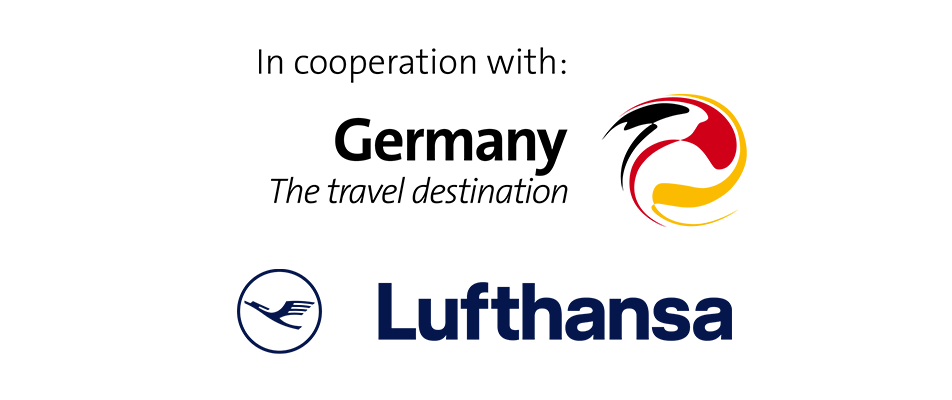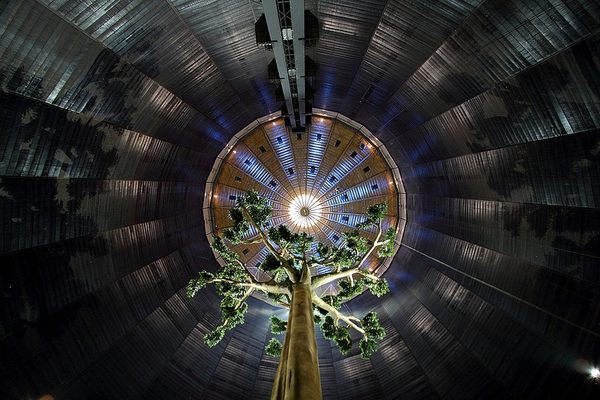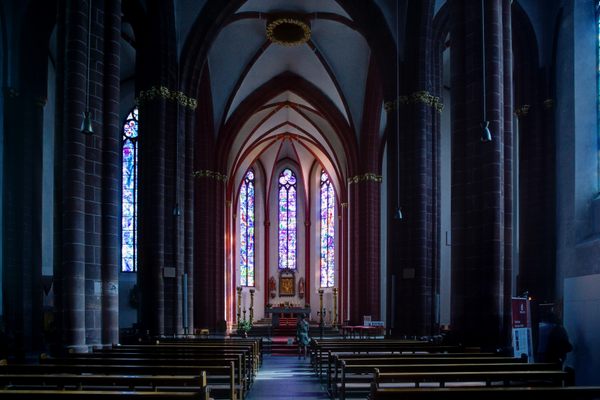
1. Krunkelbach Hut
Just like its famous multi-tier cake, the Black Forest National Park is chock-full of surprises like the Krunkelbachhütte (Krunkelbach Hut). The alpine inn on the slopes of the Herzogenhorn, the Black Forest’s second-highest mountain, is the cherry on top of Germany’s longest toboggan run.
A rustic family-owned establishment, the Krunkelbach Hut sits 1,312 feet above the alpine village of Bernau. To reach it, you can hike the 2-mile trail from town or hitch a snowcat ride from the Höfeck ski lift. Tucked into the majestic Herzogenhorn (“Duke’s Peak” in English), the wooden lodge resembles a gingerbread house—especially in the winter, when heavy regional snowfall provides generous layers of buttercream-like frosting.
From here, you can score unparalleled views of the beautiful Bernau valley while tucking into a bowl of signature Krunkelbach goulash, a stew made with local Bockwurst sausage. Afterwards, rent a sledge and speed down the winding, snowy trail.
Krunkelbachweg 10, 79872 Bernau im Schwarzwald
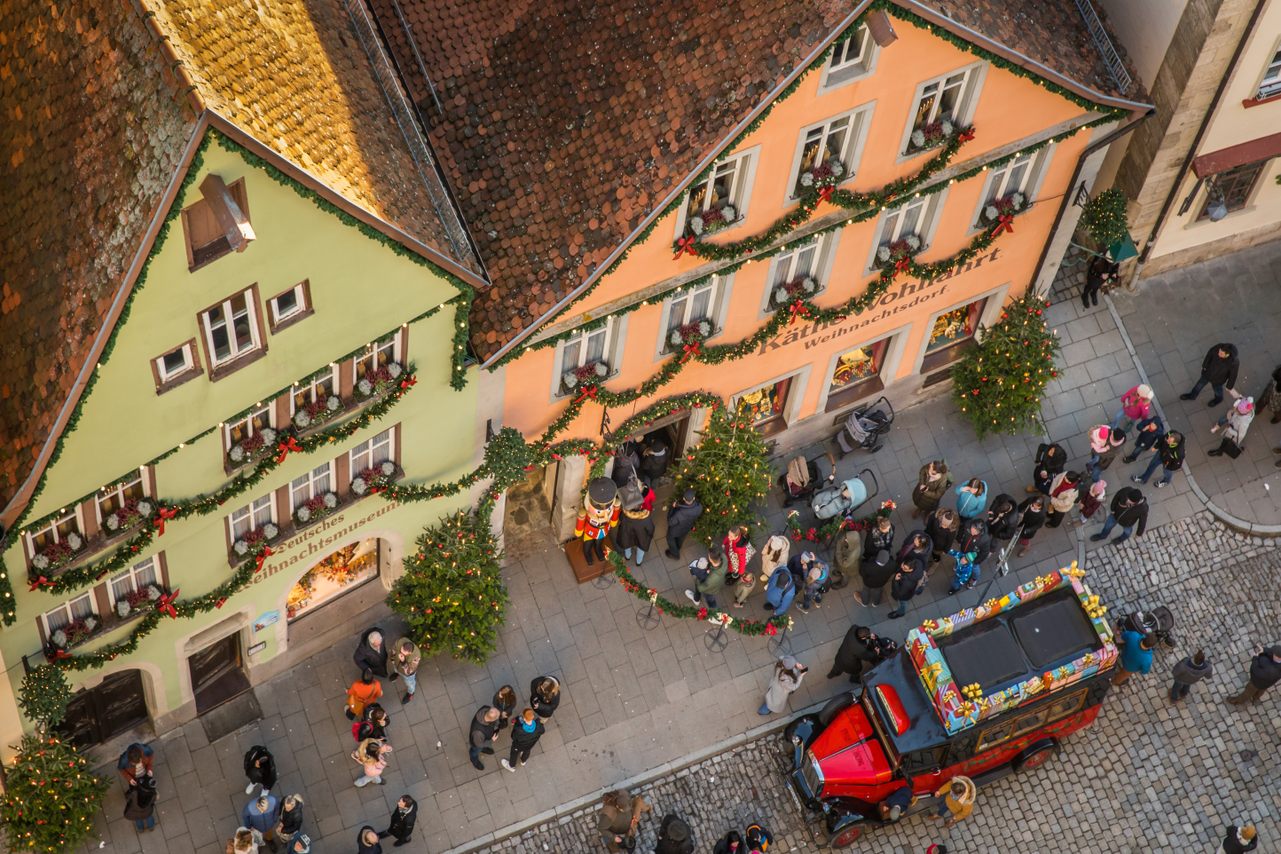
2. Rothenburg ob der Tauber
Rothenburg ob der Tauber (Red Fortress above the Tauber River) is Germany's most quintessential medieval "winter village". Dating back to 1170, the northern Bavarian village’s market square, just a two-hour drive south of Frankfurt, appears to be charmed right from a children’s bedtime story. Rothenburg’s Old Quarter, cozied in by some of Germany’s best preserved feudal city walls, holds a Christmas village boasting festive cheer 365 days a year. It is home to the world’s largest collection of German Christmas ornaments, including ornate handcrafted nutcrackers and cuckoo clocks, and the German Christmas Museum, which traces the history of local holiday customs. Year-round Yuletide, anyone?
Rothenburg ob der Tauber, 91541
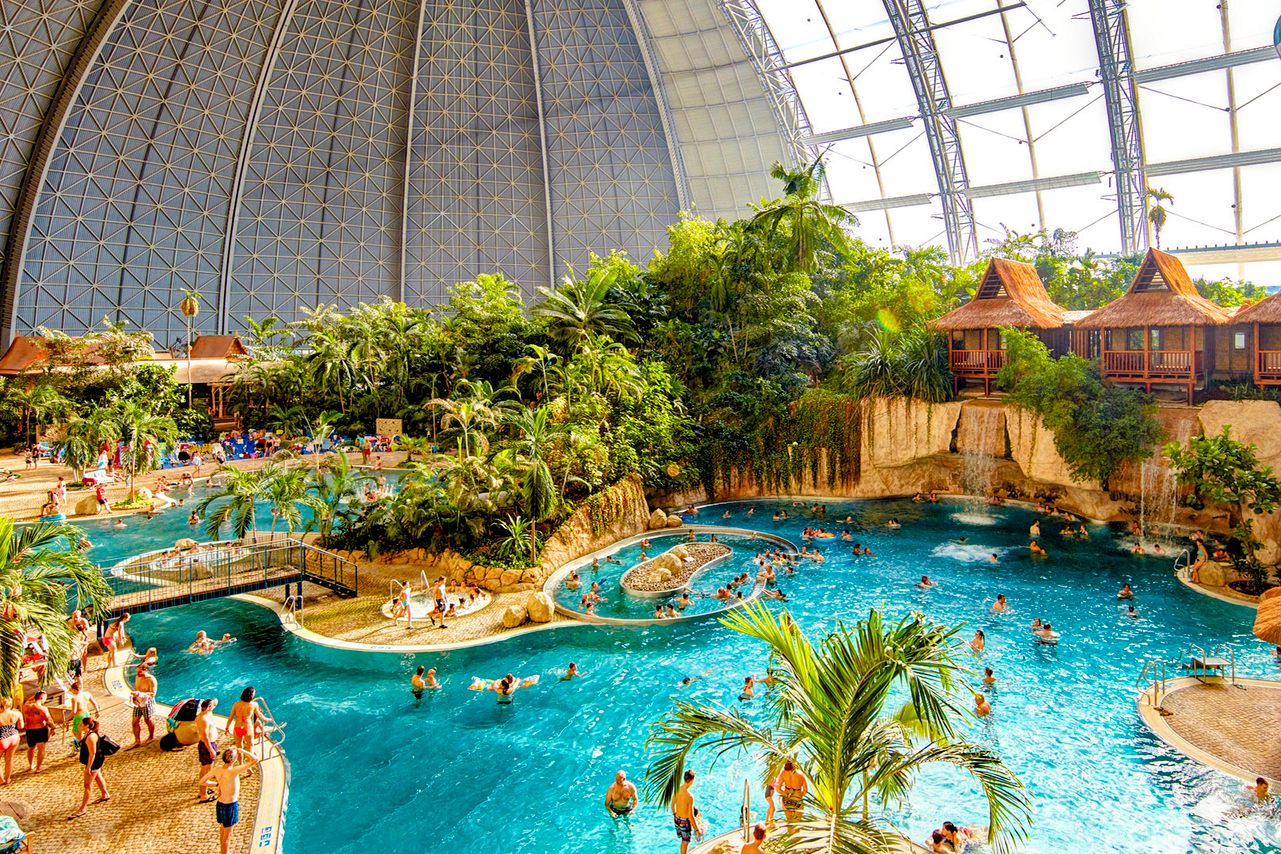
3. Tropical Islands
Inside a former airship hangar, you’ll find the world’s largest indoor waterpark, which promises beachy vibes even in the depths of winter. Tropical Islands, just an hour train ride from Berlin, is a favorite escape for locals fighting cabin fever with saunas and Mai Tais. It’s located within the Aerium, an airship hangar on the 1930s-built Brand-Briesen Airfield known as the biggest free-standing hall in the world.
The waterpark’s steely dome ceiling creates a surrealist industrial world where tropical resort life is played up to kitschy perfection: here is the world’s largest indoor rainforest, complete with real flamingos, turtles and butterflies, as well as wave pools, overnight tents and cabins and a covered beach made with real sand. Popular with families, and always climate-controled to 79°F (that’s 26°C in Germany), a day ticket sure beats the cost and carbon footprint of a Caribbean flight.
Tropical-Islands-Allee 1, 15910 Krausnick-Groß Wasserburg
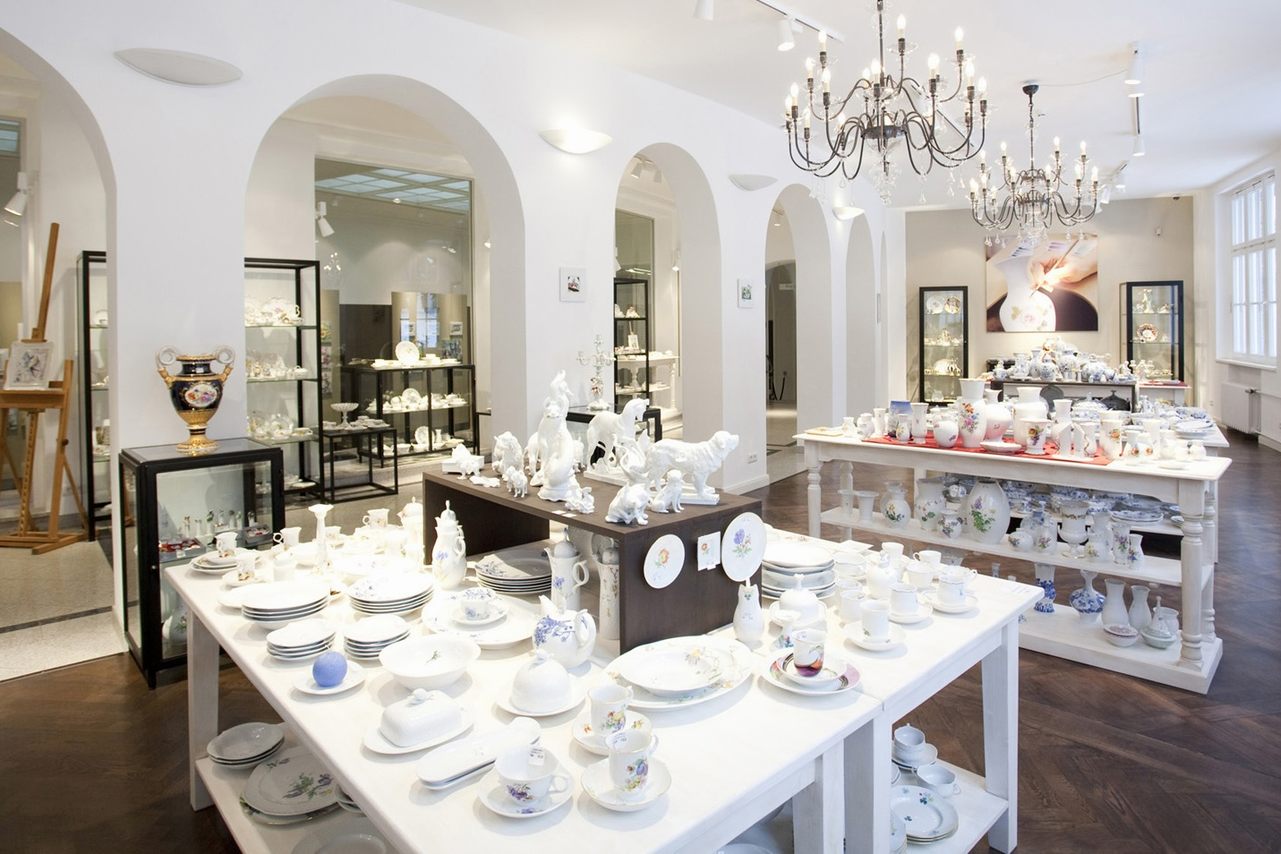
4. Meissen Porcelain Museum
A two-hour drive from Berlin in Saxony, the Meissen Porcelain Museum is the perfect place to obsess over wintry ornaments. Located next to Europe’s oldest porcelain manufactory, the museum keeps a collection of over 20,000 objects spanning a 300-year period of “white gold” artisanship from early Baroque to modern times. Many creations flaunt snowy landscapes, holiday-themed designs, and other seasonal motifs; most notably, Meissen’s signature Schneeballblüten (“snowball flowers”) pattern, a delicate technique for hand-molding blossoms introduced in the 18th century. Beyond these displays, visitors can also see porcelain craftsmanship in action, with live demonstrations of vase throwing, plate painting, figure molding, and glazing. During winter, hands-on workshops also provide opportunities to create your own tea-light holders and tree decorations.
Talstraße 9, 01662 Meißen

5. Hamburg Art Mile
Hamburg’s renowned Kunstmeile (Art Mile) traces European art through space, time, and the city’s center. The route, comprising six indoor institutions in a single all-access pass, is essentially the perfect winter activity—bringing together a broad cultural perspective from ancient and modern times, across Germany and beyond.
The Bucerius Kunst Forum is a great place to start. Known for its dynamic, contemporary multimedia exhibitions, it offers great family-friendly winter programming that includes art-making workshops, flashlight-guided evening tours, and more. Meanwhile, the Hamburger Kunsthalle keeps up a historic counterpoint with a permanent collection spanning 700 years of art history and plentiful rarities across styles ranging from medieval to Dutch Golden Age masterpieces and German Romanticism.
Alter Wall 12, 20457 Hamburg, Germany
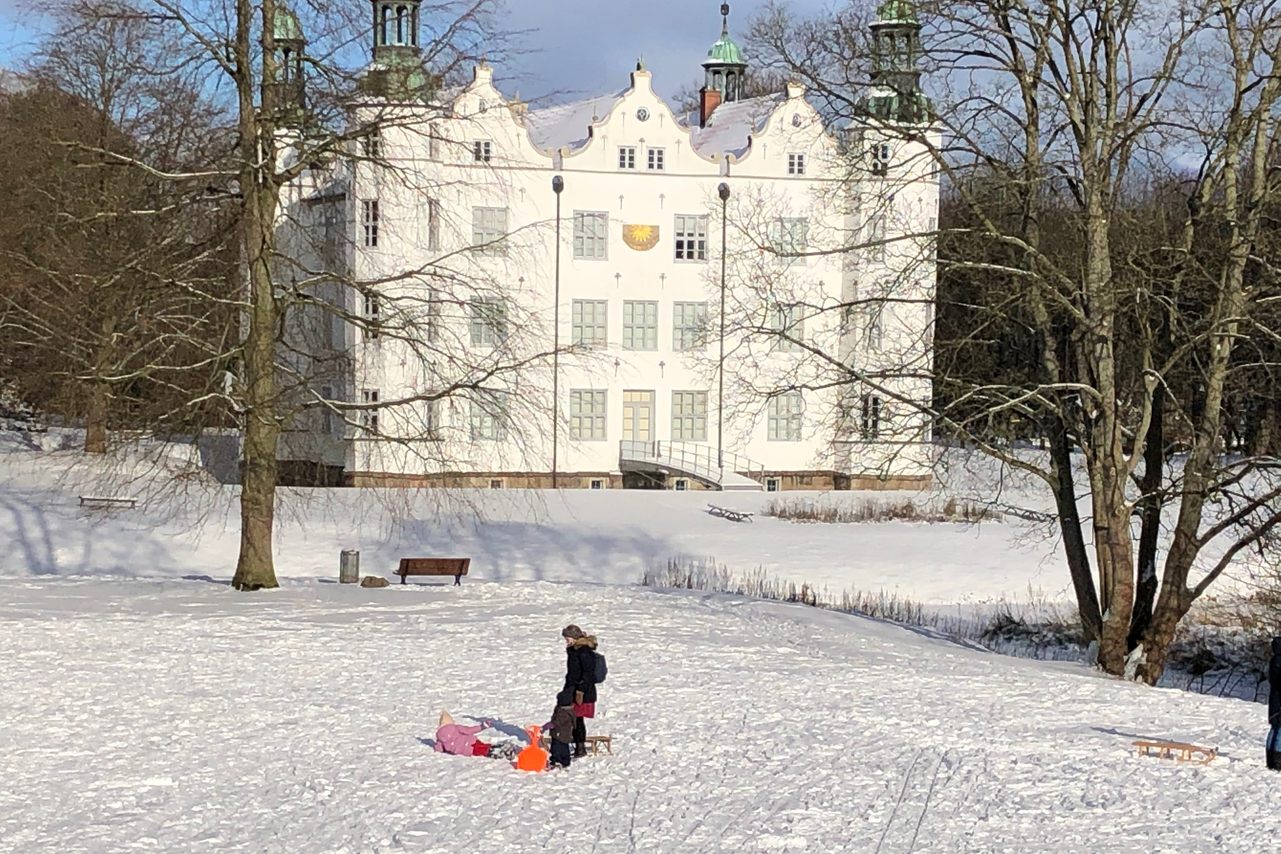
6. Ahrensburg Palace
A Golden Age marvel, Ahrensburg Palace—about 12 miles from Hamburg—is one of Germany’s most stunning Renaissance buildings. The snow-white fairytale manor is especially striking during winter, rising up along flatlands beloved for tobogganing and snowshoeing. But don’t miss the chance for a museum tour inside. Originally built by the von der Osten family, the palace is a rarity that showcases the unique Mehrfachhaus architectural style (a short-lived design trend in northern Germany during the Renaissance period). Glide across the palace’s elegant parquet floors in your warmest socks, marveling at exquisite aristocratic wonders from oil paintings to elaborate chandeliers.
Lübecker Str. 1, 22926 Ahrensburg
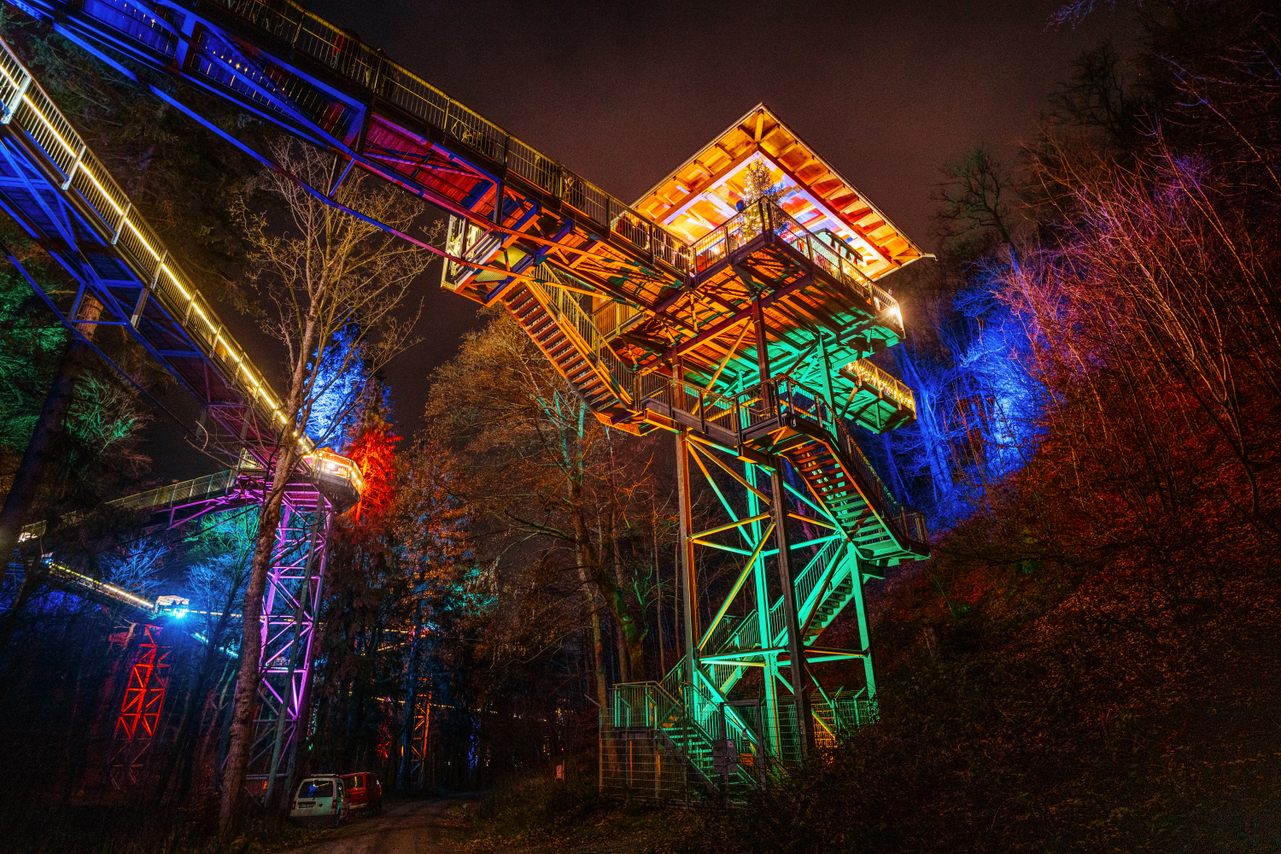
7. Harz Treetop Path
Nestled between three states (Lower Saxony, Saxony-Anhalt, and Thuringia), the Harz Mountains offer some of Germany’s most underrated and easily accessible peaks, plus winter activities without the crowds. The Harz Baumwipfelpfad (treetop walkway) is an incredible canopy path on the Grosser Burgberg range spanning 18 platforms suspended above the Kalten Valley. The roughly 3,200-foot path, reaching heights of over 65 feet, provides breathtaking views across 50 interactive exhibition stations. Themes include the Harz Mountains’ natural and cultural heritage (local flora, geology, and history), but another 15 stations delve into pondering the universe, Earth, and the meaning of life.
The walk culminates in a dome-shaped observation tower and a glass footbridge offering panoramic vistas. While the snow-capped forest is a popular spot for snowshoeing and hiking, many visitors opt to reach the observation tower by taking the Burgberg cable car, built in 1929.
Nordhäuser Straße 2b (BurgBerg Center), 38667 Bad Harzburg

8. Liquidrom
In Berlin, there is no better place to banish winter chills than a futuristic spa called Liquidrom. Hidden within the Tempodrom, a wacky-looking concert venue that was once a circus tent (and before that, a massive train station), Liquidrom is a little labyrinthine oasis of saunas, baths, and massage rooms. The central feature, though, is a magnificently designed saltwater floating pool where innovative underwater speakers play eclectic soundtracks (everything from classical music to live DJ sets) enhanced by accompanying multi-colored lights. During a spa day here, plan to go naked (as is customary in German wellness retreats) and to catch a traditional sauna Aufguss, or infusion ceremony, where essential oils are applied to hot stones while a strong-armed Aufgussmeister distributes heat by whipping towels and birch twigs with gusto.
Möckernstraße 10, 10963 Berlin

9. Gasometer Oberhausen
In the theatrical Gasometer Oberhausen, a towering 384-foot industrial cylinder, prepare to lose a sense of the outdoor season—as well as your sense of time and space. The barrel-shaped industrial relic, once used to store gas that powered blast furnaces from the 1920s, was decommissioned in 1988 and eventually transformed into one of Europe’s most impressive art venues. Preserved and repurposed, its monumental art installations are highly immersive—for example, Planet Ocean, a captivating exploration of ocean ecosystems. No visit is complete without an elevator up to the structure’s 384-foot-high platform for expansive views across the surrounding landscape.
Arenastraße 11, 46047 Oberhausen

10. Chagall Windows of St. Stephan’s
The most spectacular biblical scenes can be found on the Chagall windows at the Church of St. Stephan’s in the city of Mainz (about 27 miles from Frankfurt).
Established in 990, the church underwent extensive postwar restoration in the 1970s to become a symbol of peace and reconciliation. Renowned Jewish artist Marc Chagall was chosen to design the stained-glass windows as a testament to healing; his work drew from the Old Testament, reflecting the shared roots of Judaism and Christianity. It also featured classic scriptural figures like angels, kings, and Moses rendered into 20th-century style.
Chagall worked on the windows for St. Stephan’s throughout his life, contributing nine pieces before his death in 1985 at age 97. The work was continued by stained-glass artist Charles Marq, a collaborator of Chagall, who created 19 more windows to complete the fenestral ensemble.
Throughout December, the church hosts special Advent worships, culminating in an iconic candlelit midnight mass on Christmas Eve showcasing the stained-glass masterpieces in their prime.
Kleine Weißgasse 12, 55116 Mainz
In cooperation with the German National Tourist Office and Lufthansa.
